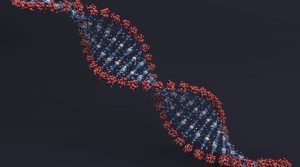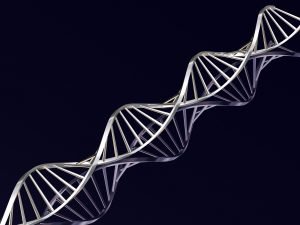Summary
Testicular cancer is a rare form of cancer that primarily affects men, with an estimated 8,000 to 10,000 cases diagnosed annually. This figure is much lower compared to prostate cancer, which impacts nearly 180,000 men each year.
This type of cancer begins with abnormal growths or tumors in either one or both testicles. One of the most noticeable early signs is a significant enlargement of the affected testicle. In addition to swelling, men may also experience discomfort, pain, or a heavy sensation in the scrotum.
The cancer typically develops in the germ cells—the cells responsible for producing sperm. Although the exact cause of these cells turning cancerous remains unclear, factors like genetic predisposition and a history of undescended testicles are considered potential risks.
Despite the serious nature of testicular cancer, it is one of the most treatable cancers. Treatments such as surgery, chemotherapy, and radiotherapy offer high recovery rates, making early detection and intervention key to successful outcomes.
Table of Contents
Symptoms of Testicular Cancer

In the early stages of testicular cancer, a man may notice the following symptoms:
- Lump in the testicle. One of the most common signs is a small, often painless lump or swelling in the testicle.
- Enlargement of the testicle. The affected testicle may become larger than usual.
- Pain in the testicles. Some men may experience a dull ache or sharp pain in the testicles or scrotum.
- Heaviness in the scrotum. A feeling of heaviness in the scrotum can be a sign that the cancer has started to affect the area.
As the disease progresses, particularly if the cancer cells spread to other parts of the body, more severe symptoms may arise:
- Breast enlargement. If the cancer disrupts hormone production, some men may notice swelling or tenderness in the breast area.
- Back pain. This occurs if the cancer spreads to the lymph nodes, which are located near the lower back.
- Abdominal pain. Pain in the stomach area can signal that the cancer has spread to the liver or other organs.
- Headache and confusion. These can occur if the cancer metastasizes to the brain, causing neurological symptoms.
If you or someone you know is experiencing any of these symptoms, it’s important to consult a doctor for further evaluation and testing. Early detection greatly increases the chance of successful treatment.
Types of Testicular Cancers
Testicular cancer is categorized based on the type of cells where the cancer originates. Here are the primary types of this cancer:
- Germ Cell Tumors (GCTs). These are the most common types of testicular cancer, making up about 95% of all cases. Germ cells are responsible for producing sperm. GCTs are further divided into two subtypes:
- Seminomas. These tumors grow slowly and are typically confined to the testes but can also spread to the lymph nodes. Seminomas are highly treatable, even in advanced stages, and can occur at any age but are most common in men aged 30 to 40.
- Non-seminomas. These tumors tend to grow and spread more quickly than seminomas. They usually develop in younger men, particularly those in their late teens to early 30s. Non-seminomas can include various subtypes, such as embryonal carcinoma, yolk sac tumors, choriocarcinoma, and teratoma.
- Stromal Tumors. This rare type of testicular cancer forms in the supportive and hormone-producing tissues of the testicles. They account for only about 5% of adult testicular tumors but are more common in children. The two main types of stromal tumors are:
- Leydig cell tumors. These originate in the Leydig cells, which produce testosterone. They can affect both adults and children, and while most Leydig cell tumors are benign, a small percentage can become cancerous.
- Sertoli cell tumors. These tumors begin in the Sertoli cells, which help support sperm development. Similar to Leydig cell tumors, they are often benign but can also become malignant.
- Secondary Testicular Cancers. These cancers originate in other parts of the body but spread to the testicles. Lymphoma is the most common secondary testicular cancer, particularly in men over 50. Secondary cancers can also spread from the prostate, lungs, or kidneys.
Testicular cancer is highly treatable, especially if detected early. Awareness of the types and symptoms helps in early detection and effective treatment.
Diagnostic Procedures for Testicular Cancer
To confirm a diagnosis of testicular cancer, doctors use several diagnostic tests and procedures to assess the condition. Early detection and accurate diagnosis are crucial for effective treatment. Here are the key diagnostic procedures:
- Physical Examination. The doctor will perform a thorough physical exam, checking for lumps, swelling, or changes in the size or shape of the testicles. Any unusual findings may prompt further testing.
- Ultrasound. A scrotal ultrasound is one of the most common and non-invasive methods used to examine the testicles. This test uses sound waves to create detailed images of the testicles, helping to determine whether a lump is solid (possibly cancerous) or filled with fluid (more likely benign). It also helps to determine whether the tumor is inside or outside the testicle.
- Blood Tests. Blood tests are used to measure tumor markers—specific proteins that are elevated in the blood due to certain types of testicular cancer. These include:
- Alpha-fetoprotein (AFP)
- Human chorionic gonadotropin (HCG)
- Lactate dehydrogenase (LDH) Elevated levels of these markers can help confirm the presence of cancer and provide insight into the type of testicular cancer present.
- Radical Inguinal Orchiectomy. If cancer is strongly suspected, the next step is often the surgical removal of the affected testicle, known as radical inguinal orchiectomy. This procedure not only treats the cancer but also provides tissue for further laboratory analysis to determine the type and stage of cancer.
- Imaging Tests. If the cancer is confirmed, imaging tests like CT scans or MRI scans may be done to check if the cancer has spread to other parts of the body, particularly the lymph nodes, lungs, liver, or brain. These tests help in staging the cancer and planning appropriate treatment.
- Biopsy. In rare cases, a biopsy may be performed to collect a sample of tissue from the testicle or surrounding areas to check for cancer cells. However, this is not often the first diagnostic approach as it may spread the cancer if it is malignant.
By combining these diagnostic procedures, healthcare providers can accurately identify the presence, type, and stage of testicular cancer, which is essential for guiding the appropriate course of treatment.
Complications of Untreated Testicular Cancer

When left untreated, testicular cancer can lead to serious and potentially life-threatening complications. While testicular cancer has a high survival rate when detected early, ignoring or delaying treatment can have severe consequences, including:
- Metastasis (Spread of Cancer). One of the most significant complications is the spread of cancer from the testicle to other parts of the body. Testicular cancer often spreads through the lymphatic system and bloodstream, targeting lymph nodes, the lungs, liver, bones, or even the brain. Once metastasis occurs, the cancer becomes much harder to treat and significantly reduces the chances of survival.
- Chronic Pain. Advanced testicular cancer can cause persistent pain, not only in the affected testicle but also in other areas where the cancer may have spread, such as the abdomen, back, or bones. This pain can be debilitating and severely affect a person’s quality of life.
- Infertility. Untreated testicular cancer, particularly if it affects both testicles, can lead to infertility. Even with treatment, some procedures like chemotherapy or the surgical removal of a testicle can damage the ability to produce sperm, affecting the patient’s fertility.
- Hormonal Imbalances. The testicles produce testosterone, an important hormone for male health. The removal of one or both testicles due to cancer can lead to decreased testosterone levels, resulting in symptoms like fatigue, decreased libido, erectile dysfunction, and muscle weakness.
- Risk of Secondary Cancers. In rare cases, untreated testicular cancer can increase the risk of developing secondary cancers in other parts of the body. This may occur due to the cancer’s aggressive nature and its ability to spread to distant organs over time.
- Complications from Tumor Growth. As the cancer grows, it can cause swelling and pressure in the testicle and surrounding tissues, leading to discomfort, swelling, and sometimes the development of fluid in the scrotum (hydrocele). Additionally, the enlargement of the tumor can increase the risk of testicular rupture or twisting (testicular torsion), which can be medical emergencies.
- Reduced Survival Rate. Most importantly, untreated testicular cancer greatly reduces the likelihood of survival. When diagnosed and treated early, the prognosis for testicular cancer is very good, with a survival rate exceeding 95%. However, delayed treatment can lower the survival rate as the disease progresses to more advanced stages.
In conclusion, testicular cancer is a highly treatable disease when addressed early, but leaving it untreated can lead to widespread health problems and significantly increase the risk of death. Regular self-examinations and prompt medical consultation when symptoms arise are essential for early detection and treatment.
Causes of Testicular Cancer

Like other cancers, the exact cause of testicular cancer is not completely understood. However, medical experts believe that several factors may contribute to the development of the condition, including the following:
- Genetics or inherited condition. One significant factor is genetics. A man may be at higher risk of developing testicular cancer if problematic genes related to the disease are inherited from his father. Even if a man’s father has not had testicular cancer, a family history of the disease increases the likelihood of developing it. Mutations in genes, especially related to DNA repair, are thought to play a role in the onset of this cancer.
- Undescended testicles (Cryptorchidism). Normally, a male baby’s testicles develop in the abdomen and descend into the scrotum before birth or shortly after. However, in some cases, one or both testicles do not descend properly, a condition known as undescended testicles (cryptorchidism). This abnormality is associated with an increased risk of testicular cancer, as testicles that remain in the abdomen are exposed to higher temperatures than those in the scrotum, which may lead to cellular changes that can trigger cancer.
In addition to these primary factors, ongoing research is exploring how other environmental and lifestyle factors might contribute to testicular cancer risk, although these factors are less clearly understood at this time.
Prevention of Testicular Cancer
According to doctors, testicular cancer cannot be fully prevented since the causes and risk factors of the disease are beyond one’s control. Factors such as genetics and undescended testicles are unchangeable, making it difficult to avoid the disease altogether. However, what men can do is focus on early detection, which is critical for successful treatment.
To detect any issues with the testicles early, doctors recommend regular self-examination, especially during or after a warm bath or shower when the scrotal skin is relaxed. During the self-check, gently feel each testicle for any unusual lumps, changes in size, or abnormalities. If you notice anything different or concerning, it is essential to consult a doctor right away for further evaluation. Regular self-exams can lead to early diagnosis, which significantly improves the chances of successful treatment.
In addition to regular self-examination, awareness about one’s family history and seeking medical advice if at risk can be crucial preventive measures.
Risk Factors for Testicular Cancer

While any man can develop testicular cancer, the likelihood increases with certain risk factors, including:
- Age. Men between the ages of 15 and 40 are the most commonly affected by testicular cancer. However, older men beyond the age of 40 can also develop this disease, though the risk tends to decrease with age.
- Race. Testicular cancer is more prevalent among Caucasian men, especially those from the United States and Europe. In contrast, it is much rarer among men of African or Asian descent. This racial disparity suggests genetic and environmental factors may play a role.
- Family History. If you have a close family member, such as a father or brother, who has had testicular cancer, your risk of developing the condition significantly increases. Genetics seem to influence this familial link.
- Undescended Testicles (Cryptorchidism). Men who have had undescended testicles—a condition where one or both testicles fail to move into the scrotum before birth—are at a much higher risk of developing testicular cancer, even if they undergo surgery to correct the issue.
- Personal History of Testicular Cancer. If you have previously been diagnosed with testicular cancer in one testicle, you have an increased risk of developing cancer in the other testicle later on.
- HIV/AIDS. Some studies suggest that men with HIV, especially those with AIDS, may have a slightly higher risk of testicular cancer, though this remains less common compared to other risk factors.
- Body Size. Some research suggests that taller men may have a slightly increased risk of developing testicular cancer, although this association is still being studied.
- Exposure to Certain Chemicals. Although uncommon, exposure to chemicals, especially in workplaces such as mines, could increase the risk of testicular cancer. However, these links are not as firmly established as other factors.
Understanding these risk factors is crucial for early detection and prevention, especially for those with a higher predisposition. Regular self-exams and medical check-ups are recommended for men who fall into any of these categories.
Testicular Cancer FAQs
- What is testicular cancer?
Testicular cancer is a rare form of cancer that begins in the cells of the testicles (testes), the male reproductive glands responsible for producing sperm and testosterone. Though rare, it is the most common cancer in young men aged 15 to 40. - What are the early signs of testicular cancer?
The most common early sign is a lump or swelling in the testicle. Other symptoms include testicular pain or discomfort, heaviness in the scrotum, and changes in the size or shape of the testicles. - Who is at risk of developing testicular cancer?
The risk factors include age (most cases occur in men aged 15-40), a family history of testicular cancer, having undescended testicles (cryptorchidism), and certain genetic conditions. Caucasian men and those with a personal history of testicular cancer also have a higher risk. - Can testicular cancer spread to other parts of the body?
Yes, if left untreated, testicular cancer can spread (metastasize) to other areas, including the lymph nodes, lungs, liver, and brain. Early diagnosis improves the likelihood of preventing this spread. - How is testicular cancer diagnosed?
Diagnosis typically involves a physical exam, ultrasound of the testicles, and blood tests to check for tumor markers (such as AFP, HCG, and LDH). A biopsy or surgery may be performed to confirm the diagnosis. - What treatment options are available for testicular cancer?
The primary treatment for testicular cancer is surgery to remove the affected testicle (orchiectomy). Depending on the cancer type and stage, additional treatments such as chemotherapy, radiation therapy, or further surgeries may be required to ensure complete recovery. - What is the survival rate for testicular cancer?
Testicular cancer has a high survival rate, especially when detected early. The five-year survival rate for localized testicular cancer is over 95%. Even in advanced stages, treatment can be highly effective. - Can testicular cancer affect fertility?
Testicular cancer treatments, particularly chemotherapy and radiation, may affect fertility. However, many men retain their fertility after treatment. Sperm banking before treatment is often recommended for men concerned about their future fertility. - Can testicular cancer recur after treatment?
Yes, testicular cancer can recur, but regular follow-up appointments and imaging tests help detect any recurrence early. The chances of recurrence depend on the stage and type of cancer. - How can I check myself for testicular cancer?
Doctors recommend performing a monthly self-exam in the shower or bath when the scrotum is relaxed. Gently roll each testicle between your thumb and fingers to feel for lumps, swelling, or changes in texture. If you notice anything unusual, consult your doctor immediately.


